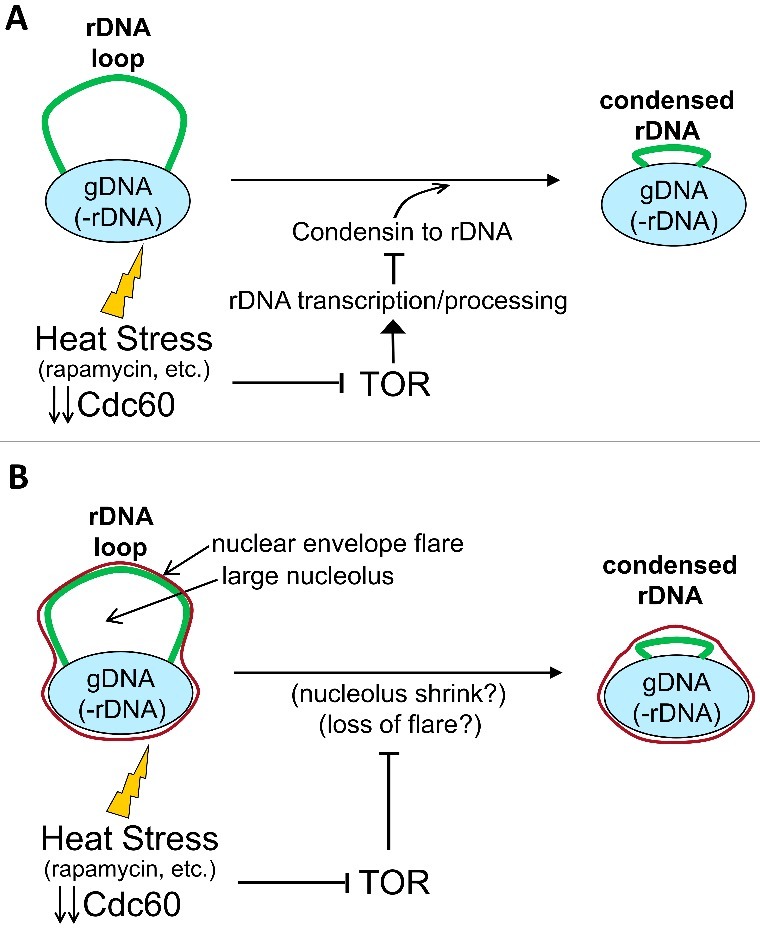Figure 7.

“Active” vs “passive” models of rDNA condensation by HS and other TORC1-dependent stresses. (A) An active model for rDNA condensation in metaphase upon stress. Heat stress, rapamycin, nutrient starvation, etc. would temporarily stop rRNA transcription through TORC1 inhibition. This, in turn, would recruit condensin to the locus to drive condensation of the loop. (B) Passive models for rDNA condensation in metaphase upon the same stresses. The rDNA loop in metaphase would be a result of the rDNA being accommodated to either nucleolus flattening or nuclear envelope flaring. Either of these protrusions would act as rDNA scaffolds and depend on an active TORC1. Environment stress would shrink these scaffolds (see text for more details) and the rDNA would accommodate to the reduced space. Note that both models are not necessarily mutually exclusive. Light blue oval, the bulk of nuclear DNA; Thick green line, the rDNA loop; Thin red line, the nuclear envelope.
